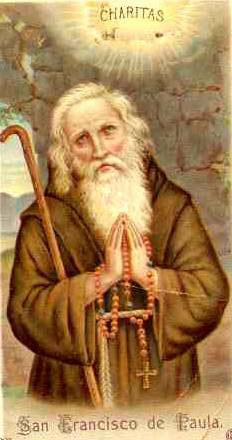 Dear readers, Catholic Online was de-platformed by Shopify for our pro-life beliefs. They shut down our Catholic Online, Catholic Online School, Prayer Candles, and Catholic Online Learning Resources essential faith tools serving over 1.4 million students and millions of families worldwide. Our founders, now in their 70's, just gave their entire life savings to protect this mission. But fewer than 2% of readers donate. If everyone gave just $5, the cost of a coffee, we could rebuild stronger and keep Catholic education free for all. Stand with us in faith. Thank you. Help Now >
Dear readers, Catholic Online was de-platformed by Shopify for our pro-life beliefs. They shut down our Catholic Online, Catholic Online School, Prayer Candles, and Catholic Online Learning Resources essential faith tools serving over 1.4 million students and millions of families worldwide. Our founders, now in their 70's, just gave their entire life savings to protect this mission. But fewer than 2% of readers donate. If everyone gave just $5, the cost of a coffee, we could rebuild stronger and keep Catholic education free for all. Stand with us in faith. Thank you. Help Now >
Abbey of Clairvaux
FREE Catholic Classes
The third daughter of Cîteaux and mother in the fourth line of numerous and celebrated monasteries, founded in 1115 by St. Bernard, in a deep valley upon the bank of the Aube, and known as the Vallée d'Absinthe (Valley of Wormwood or Bitterness), then in the Diocese of Langres , today in that of Troyes in Champagne, Department of the Aube, France. Hughes I, Count of Troyes, donated this valley to the colony of Cistercians. In a short time it became the Clara Vallis , or Clairvaux, as the new abbey is already called in a charter of 1116. After a trying and laborious beginning, Clairvaux, under the direction of St. Bernard, developed rapidly. His renown attracted such large numbers of postulants that even in his lifetime sixty-eight monasteries were founded from it in France, Italy, Germany, England, Spain, and Portugal. In 1116 twelve monks from Clairvaux installed themselves at Trois-Fontaines in the Diocese of Châlons, under the guidance of Roger, one of the first converts St. Bernard by his eloquence had attracted from the celebrated school of Stephen of Vitry. In 1119 Bernard sent another colony to found Fontenay in the Diocese of Autun, today in that of Troyes. Then were founded Foigny in the Diocese of Noyon; Cherlieu in the Diocese of Besançon ; Longpont in the Diocese of Soissons ; Vauclair in the diocese of Laon; La Grace-Dieu in the Diocese of Saintes; Buzay in the Diocese of Nantes ; Bonmont in the Diocese of Geneva (Switzerland); Hautecombe in the Diocese of Geneva, today in that of Chambéry ; Chiaravalle in the Diocese of Milan ; Moreruela in the Diocese of Zamora (Spain); Rievaulx and Fountains in the Diocese of York (England). Towards 1153 it became necessary to extend the limits of Clairvaux and erect other claustral buildings. The new buildings were quickly constructed. "The Church," says a witness, "arose from the soil as though it was animated with a living soul and capable of self-motion". It was 347 feet long and 114 feet wide, with a triple nave in eleven divisions. The transept was 177 feet and contained eight square altars facing one another. No architectural or artistic ornament relieved the severity of the style either of the interior or of the exterior.
Illustrious persons were buried at Clairvaux in the livery of the poor of Christ, among them Henry of France, brother of King Louis VII; Alexander of Cologne, who was later one of the successors of St. Bernard of Clairvaux ; Henry Murdach who became Abbot of Vauclair and later Archbishop of York ; Philip, Archdeacon of Liège, etc. Religious even of the other orders, flocked there. The Congregation of Savigny, founded in 1105 by Blessed Vital of Mortagne, with seventeen houses, became affiliated to Clairvaux in 1147, as also that of Obazine, founded by St. Stephen of Durfort in 1142. Affonso I, King of Portugal, in 1143 made his kingdom a vassal of the Abbey of Clairvaux and obliged his successors to pay to it every year, on the feast of the Annunciation , fifty marabitains of gold. In 1148, in memory of the victory over the Moors which he had gained the preceding year through the prayers of St. Bernard, he founded the Abbey of Alcobaça, whose abbots were always Grand Almoners of the Kings of Portugal. St. Bernard at his death, in 1153, left at Clairvaux seven hundred religious.
After two centuries of fervour, Clairvaux did not escape the evils of the decadence. But it was one of the first to reform. In 1615, Denis Largentier, who was its abbot, converted while in meditation at the tomb of St. Bernard, restored the fasts, abstinences and other practices of the order, and re-established in his monastery the regularity and the fervour of its first days. Clairvaux became the principal seat of the strict Observance. (See CISTERCIANS.) At the time of the Revolution (1790) Clairvaux had only 26 professed religious, counting the abbot, Dom Louis-Marie Rocourt, 10 lay brothers, and 10 affiliated pensioners of the house; 19 of the religious and all the lay brothers were secularized. After the Revolution the abbot retired to Bar-sur-Aube, where he died in obscurity, the fifty-first and last Abbot of Clairvaux, 6 April, 1824. In 1790 Clairvaux had in affiliation in France ninety-two houses with 864 religious. This abbey had given to the Church one pope, Eugene III , fifteen cardinals, and a great number of archbishops and bishops. Clairvaux became the property of the State, and during the Restoration its buildings were converted into a prison.
Join the Movement
When you sign up below, you don't just join an email list - you're joining an entire movement for Free world class Catholic education.

-

- Stations of the Cross
- Easter / Lent
- 5 Lenten Prayers
- Ash Wednesday
- Living Lent
- 7 Morning Prayers
- Mysteries of the Rosary
- Litany of the Bl. Virgin Mary
- Popular Saints
- Popular Prayers
- Female Saints
- Saint Feast Days by Month
- Pray the Rosary
Pope Francis’ April Prayer Intention: Using Technology to Strengthen Human Connections
Finding Peace Through Prayer in a World of Worry
Trump Administration Withholds Federal Grants from Planned Parenthood Over DEI and Civil Rights Concerns
Daily Catholic
 Daily Readings for Wednesday, April 02, 2025
Daily Readings for Wednesday, April 02, 2025 St. Francis of Paola: Saint of the Day for Wednesday, April 02, 2025
St. Francis of Paola: Saint of the Day for Wednesday, April 02, 2025 Prayer for God's Help in Daily Actions: Prayer of the Day for Friday, March 14, 2025
Prayer for God's Help in Daily Actions: Prayer of the Day for Friday, March 14, 2025 Daily Readings for Tuesday, April 01, 2025
Daily Readings for Tuesday, April 01, 2025 St. Hugh of Grenoble: Saint of the Day for Tuesday, April 01, 2025
St. Hugh of Grenoble: Saint of the Day for Tuesday, April 01, 2025- To Perceive Animals as God's Gifts: Prayer of the Day for Thursday, March 13, 2025
![]()
Copyright 2025 Catholic Online. All materials contained on this site, whether written, audible or visual are the exclusive property of Catholic Online and are protected under U.S. and International copyright laws, © Copyright 2025 Catholic Online. Any unauthorized use, without prior written consent of Catholic Online is strictly forbidden and prohibited.
Catholic Online is a Project of Your Catholic Voice Foundation, a Not-for-Profit Corporation. Your Catholic Voice Foundation has been granted a recognition of tax exemption under Section 501(c)(3) of the Internal Revenue Code. Federal Tax Identification Number: 81-0596847. Your gift is tax-deductible as allowed by law.


 Daily Readings for Wednesday, April 02, 2025
Daily Readings for Wednesday, April 02, 2025 St. Francis of Paola: Saint of the Day for Wednesday, April 02, 2025
St. Francis of Paola: Saint of the Day for Wednesday, April 02, 2025 Prayer for God's Help in Daily Actions: Prayer of the Day for Friday, March 14, 2025
Prayer for God's Help in Daily Actions: Prayer of the Day for Friday, March 14, 2025 St. Hugh of Grenoble: Saint of the Day for Tuesday, April 01, 2025
St. Hugh of Grenoble: Saint of the Day for Tuesday, April 01, 2025

